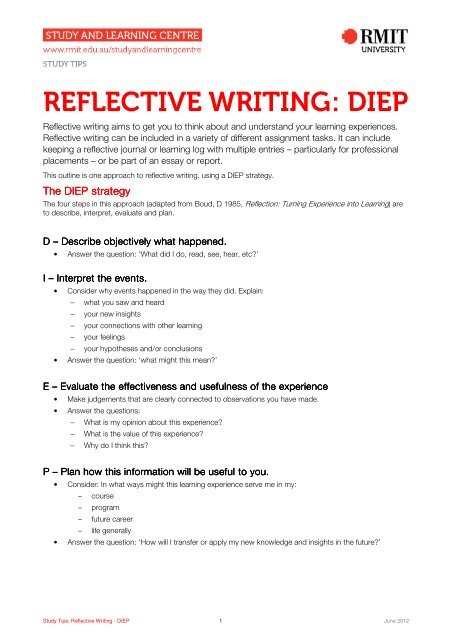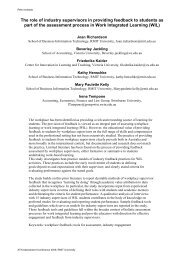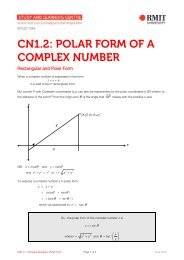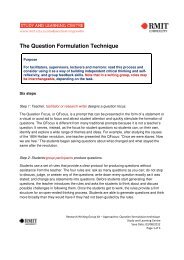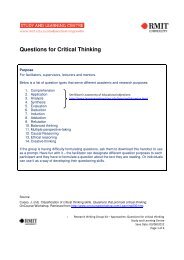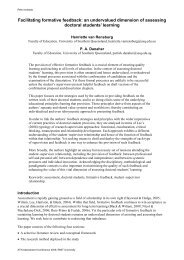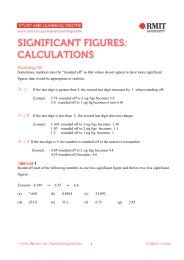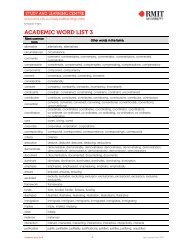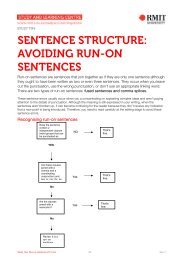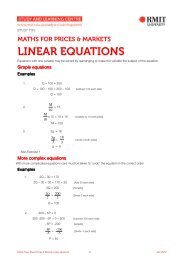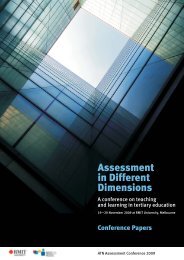Reflective journal (PDF 75.2KB)
Reflective journal (PDF 75.2KB)
Reflective journal (PDF 75.2KB)
You also want an ePaper? Increase the reach of your titles
YUMPU automatically turns print PDFs into web optimized ePapers that Google loves.
REFLECTIVE WRITING: DIEP<strong>Reflective</strong> writing aims to get you to think about and understand your learning experiences.<strong>Reflective</strong> writing can be included in a variety of different assignment tasks. It can includekeeping a reflective <strong>journal</strong> or learning log with multiple entries – particularly for professionalplacements – or be part of an essay or report.This outline is one approach to reflective writing, using a DIEP strategy.The DIEP strategyThe four steps in this approach (adapted from Boud, D 1985, Reflection: Turning Experience into Learning) areto describe, interpret, evaluate and plan.D – Describe objectively what happened.• Answer the question: ‘What did I do, read, see, hear, etc?’I – Interpret the events.• Consider why events happened in the way they did. Explain:− what you saw and heard− your new insights− your connections with other learning− your feelings− your hypotheses and/or conclusions• Answer the question: ‘what might this mean?’E – Evaluate the effectiveness and usefulness of the experience• Make judgements that are clearly connected to observations you have made.• Answer the questions:− What is my opinion about this experience?− What is the value of this experience?− Why do I think this?P – Plan how this information will be useful to you.• Consider: In what ways might this learning experience serve me in my:− course− program− future career− life generally• Answer the question: ‘How will I transfer or apply my new knowledge and insights in the future?’Study Tips: <strong>Reflective</strong> Writing - DIEP 1 June 2012
DIEP strategy for writing a reflectionIn your entries, attempt to:• analyse your own performance as a learner• evaluate your gains in understanding and completing tasks• verbalise how you feel about your learning• make connections with other experiences, ideas• demonstrate transfer of learning• integrate the concepts taught in courses (including the literature where relevant)The following is a writing strategy for reflective <strong>journal</strong> entries in four paragraphs.D – Describe objectively what happenedChoose something that you learned. Give the details of what happened. Answer the question: ‘What did I do,read, see, hear?’I – Interpret the eventsExplain your learning: new insights, connections with other learning, your feelings, hypotheses, conclusions.Answer the questions: ‘What was the reason I did this activity?’/‘What might it mean?’E – Evaluate what you ylearnedMake judgments connected to observations you have made. Answer the question: ‘How is this useful?’P – Plan how this learning will be appliedComment on its relevance to your course, program, future profession, life... Answer the question: ‘How mightthis learning apply in my future?’Study Tips: <strong>Reflective</strong> Writing - DIEP 2 June 2012


